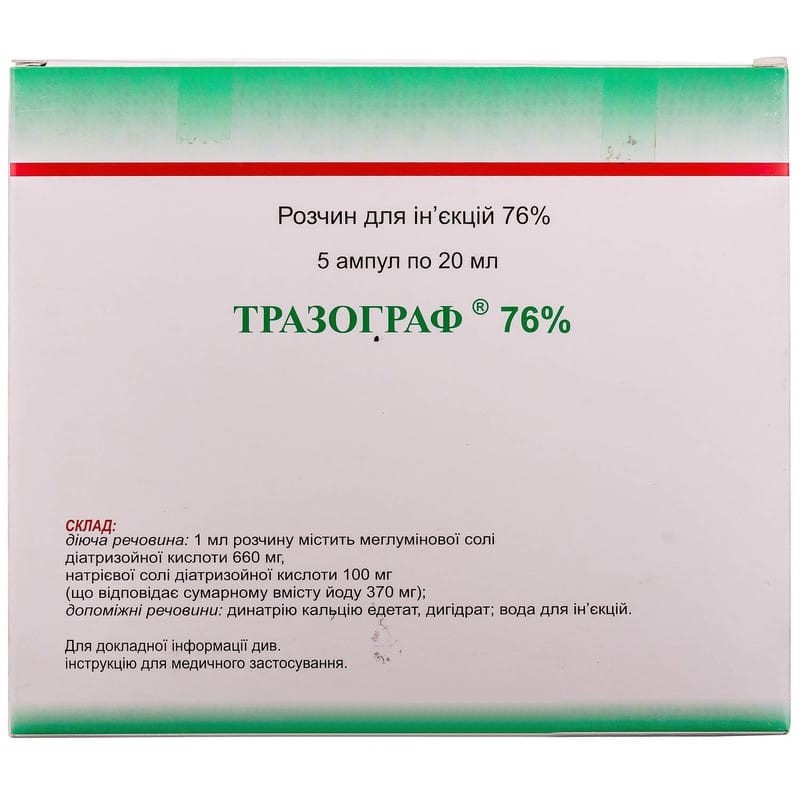



 Secure and encrypted payment processing
Secure and encrypted payment processing We ship to over 40 countries including the USA, UK, Europe, Australia and Japan
We ship to over 40 countries including the USA, UK, Europe, Australia and Japan Guaranteed refund or reship if you haven't received your order
Guaranteed refund or reship if you haven't received your orderX-ray contrast iodine-containing diagnostic tool. increases the contrast of the image due to the absorption of x-rays with iodine, which is part of the drug.
Reversibly binds to plasma proteins (mainly with the albumin fraction). It is poorly absorbed in the digestive tract and is rapidly excreted during iv administration. Penetrates through the BBB. It is excreted from the body almost unchanged in the urine and in a small amount with feces.
A 76% transograph is used for intravenous and retrograde urography, angiocoronarography, and also for imaging contrasted body cavities (computed tomography, hysterosalpingography).
A 60% trasograph is used for iv and retrograde urography, cerebral angiography, angiography of the vessels of the organs of the chest and abdominal cavity, limbs, phlebography, as well as for computed tomography.
2 days before the examination, the patient should avoid eating food that can cause flatulence (legumes, salads, coarse black or freshly baked bread, milk and vegetables). the patient should not eat after 18:00 the day before, as well as on the day of the examination. In the evening, a cleansing enema is performed, if necessary, a laxative is prescribed 2 days before the examination. on the day of the examination, the patient should starve. in bedridden patients, gases should be removed from the stomach and intestines.
For intravenous urography in adult patients, the dose is 1–1.5 ml / kg body weight, for angiocoronarography — on average 30–60 ml for Trazograf 76% and 20–60 ml for Trazograf 60%. The recommended average duration of administration is 2-3 minutes. The first x-ray study is carried out after 3-5 minutes, and the second - 10-12 minutes after infusion.
For infants and young children, the dose is 2-3 ml / kg of body weight. The average dose is 8 ml; the maximum dose, as a rule, should not exceed 20 ml. The first study is carried out 2-3 minutes after infusion.
In patients with impaired renal function, the study is carried out in 30–40 min or later.
Absolute - severe forms of hyperthyroidism, decompensated heart failure, intolerance to iodine-containing preparations, severe renal and hepatic failure, active tuberculosis and emphysema, myocardial disease, severe ag, shock and collapse, acute phlebitis (for phlebography).
Relative - cerebral arteriosclerosis, decompensated diabetes mellitus, increased blood coagulability, mild forms of nodular goiter, plasmacytoma, pregnancy, severe general condition of the patient.
Nausea, vomiting, dizziness, flushing of the skin, cyanosis, a feeling of heat and pain during the injection of the drug. allergic reactions are possible, including urticaria, angioedema, bronchospasm or anaphylactic shock.
Examination with a tripograph during pregnancy is carried out only in case of emergency.
A 60% transograph is not used for selective coronary angiography and myelography.
At room temperature, protected from light and x-rays.